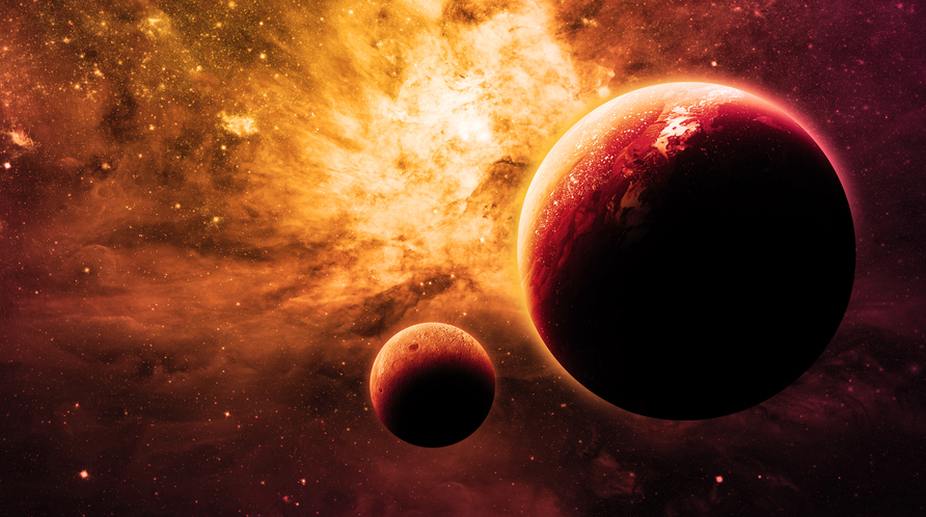NASA’s Juno mission captures lightning on Jupiter
NASA's Juno mission has captured lightning on Jupiter, the agency said.

A giant gas planet — up to 50 times the mass of Jupiter, encircled by a ring of dust — may be the object regularly blocking light from a young star more than a thousand light years away from Earth, says a study.
The researchers discovered that every two-and-half years, the light from this distant star — PDS 110 in the Orion constellation, which has the same temperature and is slightly larger than our Sun — is reduced to 30 per cent for about two to three weeks.
Advertisement
Using data from the Wide Angle Search for Planets (WASP) and Kilodegree Extremely Little Telescope (KELT), the researchers analysed 15 years of the star's activity.
Advertisement
Two notable eclipses observed were in November 2008 and January 2011.
"We found a hint that this was an interesting object in data from the WASP survey, but it wasn't until we found a second, almost identical eclipse in the KELT survey data that we knew we had something special," said lead author Hugh Osborn from University of Warwick in Britain.
The research was published in the journal Monthly Notices of the Royal Astronomical Society.
"What's exciting is that during both eclipses we see the light from the star change rapidly, and that suggests that there are rings in the eclipsing object, but these rings are many times larger than the rings around Saturn," Matthew Kenworthy from Leiden University in the Netherlands said.
Assuming the dips in starlight are coming from an orbiting planet, the next eclipse is predicted to take place in September this year — and the star is bright enough that amateur astronomers all over the world will be able to witness it and gather new data.
Only then will astronomers be certain about what is causing the mysterious eclipses.
"September's eclipse will let us study the intricate structure around PDS 110 in detail for the first time, and hopefully prove that what we are seeing is a giant exoplanet and its moons in the process of formation," Oborn said.
The researchers suggest that moons could be forming in the habitable zone around PDS 110 — pointing to the possibility that life could thrive in this system.
Advertisement